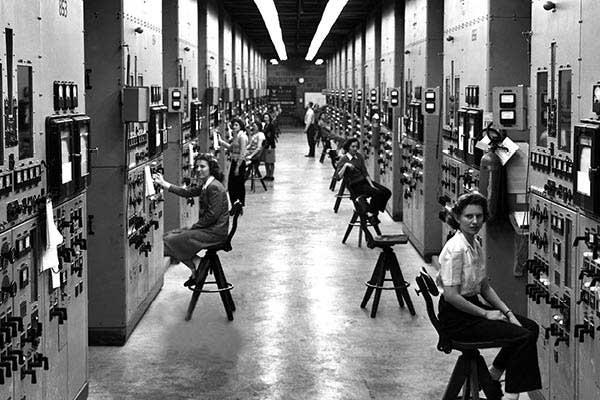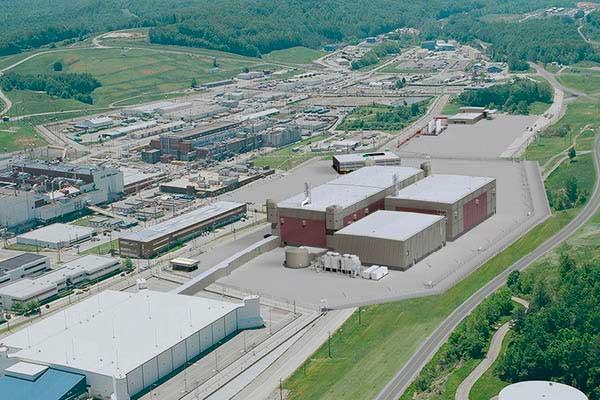Inside World War II’s Secret Cities: Part 1
Bechtel-sponsored museum exhibit looks at massive Manhattan Project effort, 75 years later.
Part 1 of a 2-part series.
Every year, some 20 million visitors flock to Washington, D.C. and for most, the grand monuments and memorials, along with the wide variety of museums and galleries top the list of attractions. Indeed, many of the museum buildings themselves are worth seeing up close. But along with the monuments and the must-see attractions touted in the city guidebooks is one of DC’s best kept secrets – the National Building Museum. There is no better place to learn about the history and impact of architecture, engineering and design than in a museum that is itself a work of art. Enter the expansive Great Hall with its 75-foot-tall columns, and visitors embark on a journey to discover the historical foundation of our modern-built environment.
In May of 2018, the museum opens a very special look inside World War II’s Secret Cities, an exhibit sponsored in part by Bechtel. The exhibit explores three communities – Oak Ridge, Tennessee; Hanford, Washington; and Los Alamos, New Mexico – created in the early 1940s to produce the world’s first nuclear weapons. With dozens of nations fighting a world war, the U.S. undertook a massive scientific, engineering, and industrial effort unlike anything before or since – all for the purpose of defeating powerful enemies that were seen as an existential threat to the United States. It changed large geographic areas forever.
According to museum senior curator Martin Moeller, “when we study these cities we learn about our culture and our priorities. With this profound insight, we can work towards better communities and a better world.” Today, through its work at each of these sites, Bechtel is one of the key players building on the innovations and engineering from the past to sustain vital, ongoing national security missions, improve these three communities, and create the very world Moeller envisions.
THE LIVING LABORATORIES AS MODELS FOR OUR CULTURE
When you step into the museum, you’ll be greeted with black and white photographs depicting the homes, industrial infrastructure and unique culture of these communities during the war. Images portraying atomic bomb board games and the secrecy of the war effort seem to take you back in time. Still other images of the suburban neighborhoods seem eerily familiar. Why? Because like the secret weapons themselves, careful planning went into creating these communities. Each place helped lay the foundation for modern suburbia. Despite the war’s desperate circumstances and stringent deadlines, the planners knew the sacrifice they were asking of the civilian scientists, workers and their families. They needed more than large barracks and mess halls. In addition to large, factorylike industrial complexes, significant planning went in to building real neighborhoods, complete with single-family homes, shops, schools and libraries.
As you walk further into the museum, you begin to see a shift in the concepts represented in the photographs. These communities are still very much living laboratories and breakthrough innovation hubs. Throughout the last decade, these three sites have taken on environmental, economic and social sustainability projects to ensure their vitality and viability for the next 75 years. They reflect technological progress and sustainable development that we strive for today, and for the future.
OAK RIDGE: A TRAILBLAZER THEN AND NOW
The Oak Ridge, Tennessee you see depicted on the walls of the exhibit is a bustling town full of thousands of workers and a series of complex plants. But before the war, it was a very different scene consisting of thousands of acres of undeveloped land. In 1942, leaders of the Manhattan project selected Oak Ridge and transformed this area into a critical part of the war effort.
The site was home to the uranium enrichment plant and liquid thermal diffusion plant. Using processes such as gaseous diffusion and thousands of devices known as cyclotrons, these plants produced uranium and other material for the atomic weapons created at the Los Alamos site. In addition, Oak Ridge also piloted a nuclear reactor that produced small quantities of plutonium – which would later lead to large scale plutonium production at the Hanford site.
Although much has changed at Oak Ridge today, the site’s role as a pioneer for innovative technology remains. From neutron science and nuclear science, to clean energy and supercomputing, the site is at forefront of scientific advancement and national security.
Today at Oak Ridge, Bechtel leads the management and operations team at the Y-12 National Security Complex and is helping to build the new Uranium Processing Facility. The facility will be a state-of-the-art complex that ensures the viability, safety, and security of the enriched uranium capability in the U.S. The new facility will also support the nation’s nuclear weapons stockpile, downblend uranium to prevent the spread of nuclear weapons, and provide uranium for fuel for U.S. Navy submarines and aircraft carriers.
Because the old facility consists of aging World War II and Cold War-era buildings that are inefficient and costly to operate, UPF and other infrastructure improvements will help bring Y-12 into modern standards for safety and energy efficiency. In fact, the site has won a number of U.S. Department of Energy sustainability awards.
IMPROVING THE ENVIRONMENT FOR FUTURE GENERATIONS
Prior to its work on the Uranium Processing Facility, Bechtel led a DOE Environmental Management program at Oak Ridge. Over the course of more than 13 years, Bechtel decontaminated and demolished more than 200 old buildings used during the Manhattan Project and Cold War, remediated contaminated soil and water, and treated and disposed of waste.
The area is now known as the East Tennessee Technology Park – an industrial park created after the government transferred suitable land and buildings to private ownership for productive use.
Oak Ridge’s past and present is only one chapter in a larger story of World War II’s Secret Cities and Bechtel’s role in ensuring that their legacy of innovation continues. In our next post, we take you inside the Secret Cities of Hanford and Los Alamos.




